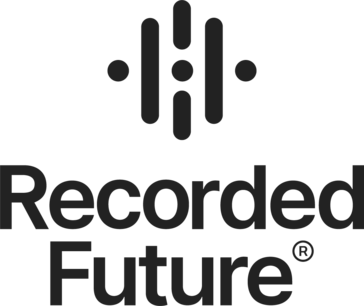Papyrs and Recorded Future integration
Save yourself the work of writing custom integrations for Papyrs and Recorded Future and use n8n instead. Build adaptable and scalable Productivity, workflows that work with your technology stack. All within a building experience you will love.


How to connect Papyrs and Recorded Future
Create a new workflow and add the first step
In n8n, click the "Add workflow" button in the Workflows tab to create a new workflow. Add the starting point – a trigger on when your workflow should run: an app event, a schedule, a webhook call, another workflow, an AI chat, or a manual trigger. Sometimes, the HTTP Request node might already serve as your starting point.
Build your own Papyrs and Recorded Future integration
Create custom Papyrs and Recorded Future workflows by choosing triggers and actions. Nodes come with global operations and settings, as well as app-specific parameters that can be configured. You can also use the HTTP Request node to query data from any app or service with a REST API.
Supported API Endpoints for Papyrs
List pages
Retrieve all pages for a user.
Get page
Returns a dictionary with page information.
Get all pages
Get a list of all pages visible to the user making the request.
Delete page
Deletes a page based on the provided page ID.
Create page
Creates a new page with the provided content and settings.
Create paragraph
Create a new paragraph in the specified page.
Post feed
Submit a new post to the feed.
Post to the Activity Stream
Post a comment to the Activity Stream.
Post to discussion stream
Post a comment to a discussion stream on a specific page.
List records
Returns a list of all form records submitted on the specified page.
Get widget
Retrieves details of a specific widget by its ID on the specified page.
Get widget
Retrieves details of a specific heading widget by its ID on the specified page.
Get widget
Retrieves details of a specific attachment widget by its ID on the specified page.
Create paragraph widget
Creates a new text box widget on the specified page.
Create heading widget
Creates a new heading widget on the specified page.
Update paragraph widget
Updates an existing text box widget on the specified page.
Update heading widget
Updates an existing heading widget on the specified page.
Create attachment widget
Creates a new attachment widget on the specified page.
Create attachment
Create a new attachment widget on a page.
Update attachment
Update an existing attachment widget on a page.
Delete attachment
Delete an attachment widget from a page.
Delete paragraph
Delete a paragraph widget from a page.
Delete heading
Delete a heading widget from a page.
Search
Get a list of search results based on a query.
Get all people
Get a list of all people in your account.
Delete user
Permanently delete a user from your account.
To set up Papyrs integration, add the HTTP Request node to your workflow canvas and authenticate it using a generic authentication method. The HTTP Request node makes custom API calls to Papyrs to query the data you need using the API endpoint URLs you provide.
See the example hereThese API endpoints were generated using n8n
n8n AI workflow transforms web scraping into an intelligent, AI-powered knowledge extraction system that uses vector embeddings to semantically analyze, chunk, store, and retrieve the most relevant API documentation from web pages. Remember to check the Papyrs official documentation to get a full list of all API endpoints and verify the scraped ones!
Supported API Endpoints for Recorded Future
GetEntity
Retrieve details of a specific entity.
SearchEntities
Search for entities based on criteria.
ListEntityTypes
List all entity types available.
GetEntityAssociations
Retrieve associations for a specific entity.
GetEntityRiskScore
Retrieve risk score for a specific entity.
GetAlerts
Retrieve a list of alerts.
GetAlertDetails
Retrieve details of a specific alert.
CreateAlert
Create a new alert.
UpdateAlert
Update an existing alert.
DeleteAlert
Delete a specific alert.
GetIntelligence
Retrieve intelligence for a specific query.
SearchIntelligence
Search for intelligence data.
GetIntelligenceTrending
Retrieve trending intelligence data.
GetIntelligenceByCategory
Retrieve intelligence data by category.
GetIntelligenceSummary
Retrieve summary of intelligence data.
GetRiskLists
Retrieve a list of risk lists.
GetRiskListDetails
Retrieve details of a specific risk list.
CreateRiskList
Create a new risk list.
UpdateRiskList
Update an existing risk list.
DeleteRiskList
Delete a specific risk list.
To set up Recorded Future integration, add the HTTP Request node to your workflow canvas and authenticate it using a predefined credential type. This allows you to perform custom operations, without additional authentication setup. The HTTP Request node makes custom API calls to Recorded Future to query the data you need using the URLs you provide.
Take a look at the Recorded Future official documentation to get a full list of all API endpoints
Papyrs and Recorded Future integration details
FAQ
Can Papyrs connect with Recorded Future?
Can I use Papyrs’s API with n8n?
Can I use Recorded Future’s API with n8n?
Is n8n secure for integrating Papyrs and Recorded Future?
How to get started with Papyrs and Recorded Future integration in n8n.io?
Looking to integrate Papyrs and Recorded Future in your company?
The world's most popular workflow automation platform for technical teams including
Why use n8n to integrate Papyrs with Recorded Future
Build complex workflows, really fast


